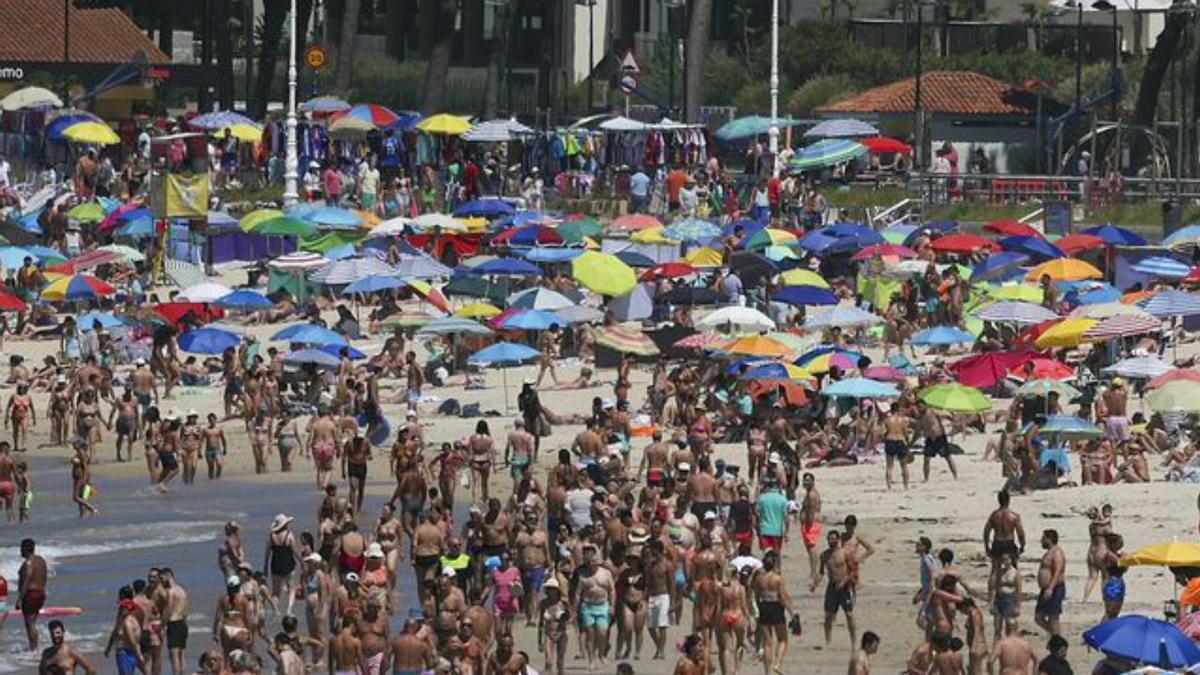After the bridge in August, many families are counting down the last hours until the end of their vacation while others are preparing to start theirs, but in all cases (almost) it will be the most expensive vacation yet, even if the destination is exactly the same as in other years. Chartering a plane, a car, renting a house or booking a hotel room is now 10% to 35% more expensive than in the years before the Covid pandemic.
It is derived from the macroeconomics of a widespread feeling on the street: “summer” is more expensive every year than the previous one. For example, a (fictional) family that in 2019 spent around 2,800 euros in two summer weeks – 2,000 on the hotel, 500 on restaurants, 200 on fuel, 100 on plane tickets – would this year pay more than 3,600 euros for the same plan. And to all this we must add any additional expenses in the shopping basket, which also become more expensive.
According to IPC data for July, published this week by the National Institute of Statistics (INE), filling up on petrol or diesel was 20% more expensive last month than in the same period in 2019. Domestic flights increased by 10% and hotels by 33%. But renting a second home – a popular option among national tourists on the coast – is now 7.5% more expensive than five years ago, and sleeping in a campsite or hostel is 17.5% more expensive.
International flights
The most noticeable increases are those of national tourist packages, which have risen by 43%, and catering services, where the price of à la carte lunches or dinners has increased by an average of 20.5% since 2019. A good example is simple beer, very popular in beach bars: today it is 27% to 28% more expensive than five years ago, depending on whether it contains alcohol or not.
The only exception is international flights, which have become 3.6% cheaper than in 2019 and 4.9% more affordable than last year. But even compared to last year, the hole in the pocket is still larger: domestic air tickets are the most expensive (11.7%), but tourist offers for citizens (9.8%), hotels and restaurants (5%) also increase. Gasoline costs 0.6% more and diesel by 2.14%. Blonde and non-alcoholic beer are also more expensive than a year ago, by 1.1% and 3.7% respectively, while the rest have decreased in price by 0.16%.
But not all autonomous communities are raising prices at the same rate. In fact, Galicia is the region where holidays have become more expensive in recent years. At least that’s what the Tourism and Hospitality heading of the Consumer Price Index (IPC) published by the National Institute of Statistics (INE) suggests. This item covers the entire sector, from tourist offers to hotels, hostels, pensions or campsites as well as catering services, and shows an increase of 26% compared to pre-pandemic prices. Navarra and Catalonia are the communities that have recorded the lowest growth rates, with 19.12% and 20.83% respectively, while the Spanish average is 23.02%.
Balearic Islands, the most expensive
It is not an isolated fact, because also in historical comparison, since 2002, the first year for which INE data is available, Galicia is the community where tourism and hospitality prices have increased the most, with an increase of 98%, while the Canary Islands have been the least developed, with an increase of 71%. These enormous increases in no way mean that Galicia is the region with the highest prices, not in the long run. The Balearic Islands hold this title, while on the other hand, among the cheap communities, there are Extremadura, Asturias and Murcia.
Related News
The price increase coincides with a slowdown in Spanish demand, predicted by the tourism lobby Exceltor on the eve of the summer season, after a huge post-pandemic growth. Domestic demand began to show signs of fatigue during the spring months, with the number of nights barely up compared to last year (0.4%) and tourist spending on cards (according to Caixabank data) rising by 5.9% due to the increase in prices – if inflation is discounted, the advance drops to 0.3% – but not due to the increase in reserves, and was much lower than foreign spending (19%).
But those who were not spared from this situation were foreign visitors who, in the first half of the year, exceeded the 40 million tourist barrier for the first time in history, an increase of 13% over last year and 11% over 2019. With spending of 55,573 million euros, an increase of 20.6% over last year and 38% over before the pandemic.

“Infuriatingly humble social media buff. Twitter advocate. Writer. Internet nerd.”









